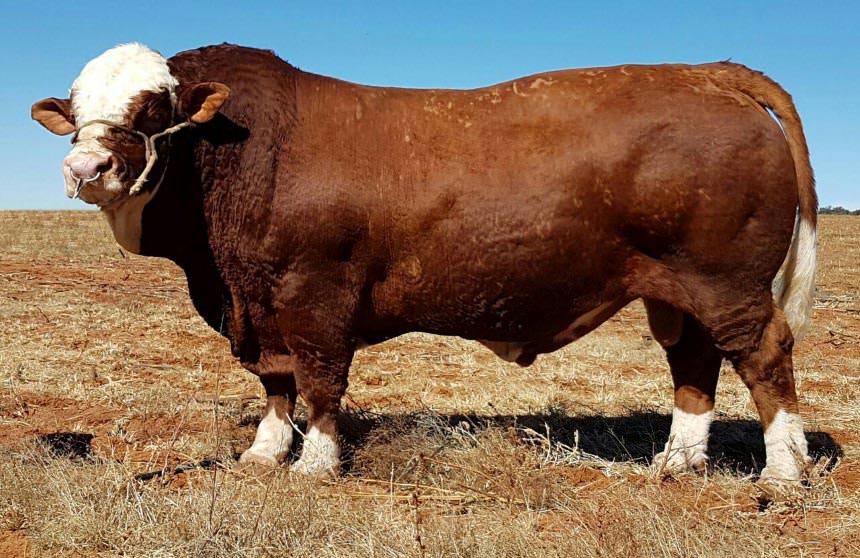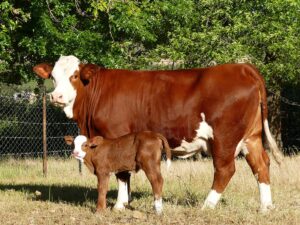Exploring Simmentaler Cattle in South Africa
Simmentaler cattle, also known as Simmentals, have established themselves as a prominent breed in South Africa’s diverse livestock landscape. This article will delve into their origin, introduction to South Africa, growing popularity, unique characteristics, advantages, and disadvantages. We’ll also explore their distribution across South Africa and rank the nine provinces for suitable breeding.
These cattle originated in the Simme Valley, Switzerland, and were first introduced to South Africa in the early 1900s. The cattle were brought to the country primarily for their impressive beef production qualities, adaptability to various climates, and versatility in crossbreeding programs. The breed’s reputation quickly grew, leading to widespread adoption among South African farmers.
Popularity and What the Cattle Are Known For
In South Africa, Simmentaler cattle have gained immense popularity for several reasons. They are known for their robustness, adaptability, and exceptional growth rate. Their adaptability allows them to thrive in various environmental conditions, making them suitable for a wide range of farming systems.
One of the most notable features of Simmentaler cattle is their impressive beef quality. They are renowned for producing tender, well-marbled, and flavorful meat, which is highly sought after by both local consumers and international markets. Simmentals are often favored in crossbreeding programs to enhance the beef quality of other cattle breeds.

Their Advantages and Disadvantages
Advantages:
- High Growth Rate: Simmentaler cattle are known for their rapid growth, reaching market weight more quickly than many other breeds. This makes them an economically attractive option for beef producers.
- Excellent Beef Quality: Their meat is prized for its tenderness, juiciness, and marbling, making it a top choice in the beef industry.
- Adaptability: Simmentaler cattle can adapt to various climates and environmental conditions, making them suitable for different regions of South Africa.
- Crossbreeding Potential: They are often used in crossbreeding programs to improve the beef quality of other cattle breeds.
Disadvantages:
- High Maintenance: While they are adaptable, Simmentaler cattle may require more intensive management compared to some indigenous breeds.
- Space Requirements: Their large size means they need ample grazing and feeding space, which can be a limiting factor for some farmers.
Characteristics of Simmentaler Cattle
Simmentaler cattle are easily recognizable due to their distinctive characteristics:
- Coloration: They are typically light to dark red or mahogany with a white face, chest, and lower legs. Some may have additional white markings.
- Build: Simmentals have a strong, muscular build with a medium to large frame. Their well-proportioned bodies contribute to their excellent meat yield.
- Horns: While some Simmentaler cattle are naturally horned, others are polled (hornless), making them safer to handle.
Average Slaughter Weight and Feeding
Simmentaler cattle are known for their ability to achieve substantial slaughter weights. On average, Simmentals can reach a slaughter weight of 650 to 750 kilograms (1,430 to 1,650 pounds) within 18 to 24 months, depending on feeding practices and genetics.
To optimize growth and meat quality, a balanced diet is essential. They thrive on a diet of quality forage, supplemented with grain and protein-rich feeds. Adequate nutrition plays a crucial role in ensuring these cattle reach their full growth potential.
Parasites and Dosage for Simmentaler Cattle
Like all cattle breeds, Simmentaler cattle can be susceptible to internal and external parasites. Regular monitoring and management are crucial to maintain their health and productivity.
Common parasites in cattle include gastrointestinal worms and external parasites like ticks. Parasite control methods include rotational grazing, strategic deworming, and the use of acaricides for tick control. The dosage of dewormers and acaricides should be determined based on the specific needs of the herd and in consultation with a veterinarian.
Comparing Simmentaler Cattle to Angus
While both Simmentaler and Angus cattle are renowned for their beef quality, they have distinct differences:
Simmentaler Cattle:
- Originated in Switzerland.
- Known for their larger size and robust build.
- Exhibit a red coat with white facial markings.
- Rapid growth rate.
- Adaptability to various climates.
- Suitable for crossbreeding programs.
Angus Cattle:
- Originated in Scotland.
- Smaller in size compared to Simmentaler.
- Solid black coat.
- Known for high marbling and meat quality.
- Generally more docile temperament.
- Adapt well to grazing systems.
Choosing between Simmentaler and Angus depends on the specific goals of a cattle operation and the environmental conditions of the region.

Calving and Parenting of Simmentaler Cattle
Simmentaler cows are known for their good mothering abilities. They generally exhibit strong maternal instincts and provide adequate care for their calves. The calving process is typically smooth, and Simmental calves are known for their vigor and early growth.
Distribution of Simmentaler Cattle in South Africa
Simmentaler cattle have a wide distribution across South Africa, thanks to their adaptability and popularity. They are found in various provinces, each contributing to the breed’s overall genetic diversity and breeding programs.
Ranking South Africa’s Nine Provinces for Suitable Breeding
When considering the suitability of each province for Simmentaler cattle breeding, it’s essential to assess factors such as climate, available resources, and market demand. Here’s a ranking of the provinces in South Africa for breeding Simmentaler cattle:
- Gauteng: This province, with its favorable climate and proximity to major markets, is an excellent choice for Simmentaler breeding.
- KwaZulu-Natal: Known for its diverse climates, KwaZulu-Natal offers opportunities for Simmentaler cattle to thrive.
- Eastern Cape: The Eastern Cape’s extensive grazing lands make it a suitable region for Simmental cattle farming.
- Western Cape: While it may not have the largest land area, the Western Cape’s temperate climate makes it ideal for cattle farming.
- Mpumalanga: With a mix of highveld and lowveld regions, Mpumalanga offers diverse options for Simmentaler breeding.
- North West: This province’s well-established livestock industry and abundant grazing land make it a good choice for Simmentaler cattle.
- Limpopo: Limpopo’s varied climate and available resources make it suitable for Simmentaler cattle farming.
- Free State: Known as the “breadbasket” of South Africa, the Free State offers fertile land for cattle farming.
- Northern Cape: While the arid climate presents challenges, Simmentaler cattle can thrive in select areas with proper management.
Conclusion
Simmentaler cattle have firmly established themselves in South Africa’s livestock industry, thanks to their exceptional beef quality, adaptability, and rapid growth rate. While they come with advantages such as high growth rates and adaptability, it’s essential to consider factors like space requirements and maintenance.
These cattle have found homes in various South African provinces, with each region contributing to the breed’s diversity and growth. By understanding their characteristics and evaluating the suitability of different provinces, farmers can make informed decisions about breeding Simmentaler cattle for optimal success in South Africa’s vibrant cattle industry.
Written by: Nicolene Oosthuizen
